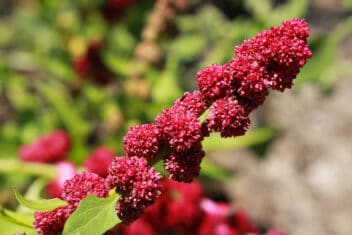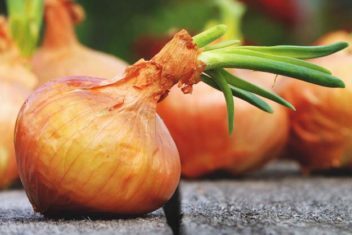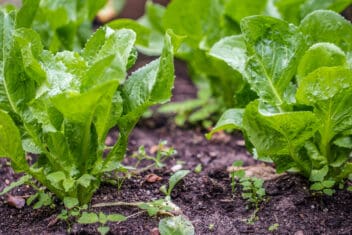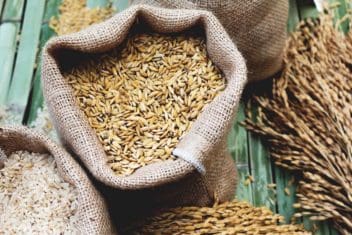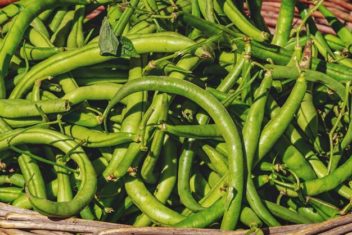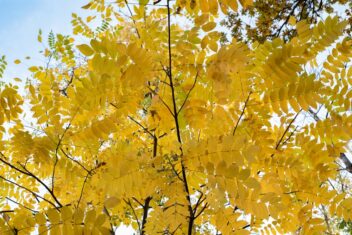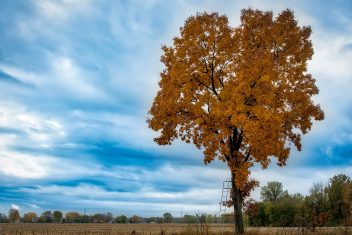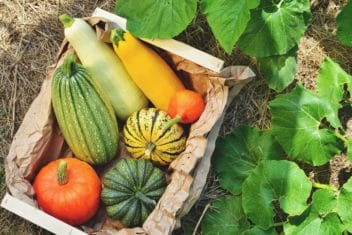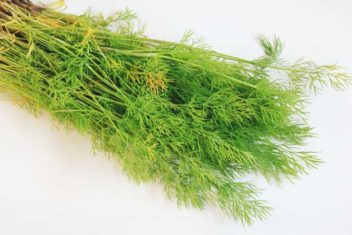Sometimes the name of a plant just describes it perfectly. Lady palm is one example. It’s a small, elegant palm species, in contrast to the huge beach palms most of us are familiar with. The beauty of growing lady palms is that you can enjoy a bit of the tropics indoors.
If you live in the right area, you can grow them outside where they’ll get larger than they would be indoors but are still just as delicately lovely.
If you’re interested in lady palms, let’s talk about the secrets to indoor and outdoor growing.
What are Lady Palms?
Lady palm (Rhapis excelsa) is also known as bamboo palm, broadleaf palm, and miniature fan palm. It’s distinctive in appearance because instead of a single trunk, it has a number of stems that look like bamboo, but without the invasive growth habit.
Originally from China, it was imported into Japan in the 17th century before being taken to Europe and America. Lady palm doesn’t exist in the wild any longer and all species available originate from cultivated plants.
Lady palms were planted around the houses of military commanders in ancient Japan. The shape of the leaves was said to ward off those with nefarious intentions. They were also valued by the aristocracy.
Raphis is a Greek word for needle and describes the slender, pointy leaves. The leaves are grouped in a fan shape and they have a beautiful, deep green base. Some varieties are variegated.
Varieties of Lady Palm

Here are some common varieties that you might come across at nurseries and plant stores.
Tenzan
This is a fast-growing variety and the leaves have a noticeable curl as the plant matures. It can grow up to eight feet tall outdoors, but stays closer to three indoors.
Koban
This dwarf variety has leaves that are wider than average and have a pleasing umbrella shape. ‘Koban’ grows quite wide and, if planted outside, it may grow as wide as it is tall, reaching up to about eighteen inches tall.
Daruma
‘Daruma’ is a miniature variety and quite slow-growing. It’s great for indoors or outside in an area with limited space. This is a good variety to start with if you’ve never grown lady palm before because it’s extremely tough.
This is an elegant variety with slender, upright growth. The leaves are narrow and quite fine.
Zuikonishiki
This is a highly sought-after variety. It has green and white striped leaves, which is a desirable trait for lady palm enthusiasts because it’s rare. Stays compact, rarely reaching above 36 inches.
Ayanishiki
This is a very solid grower and is great for those who want more lady palms because it’s prolific in growing offsets, though not all will be variegated. The leaves have a striped pattern featuring light and dark green.
Kinponishiki
This is a perfect variety for indoors. It has light, lime-colored leaves that have a shine on them some varieties don’t have.
How to Plant Lady Palm

Lady palm thrives in rooms with a temperature range between 60-80ºF. But don’t feel like you need to watch the thermostat like a hawk. These hardy palms can actually survive in brief temps down to 15°F.
Don’t skimp on purchasing or making a quality potting mix for lady palms. What’s important is that it drains well and is rich in organic matter. Like most plants, lady palms don’t like sopping soil.
Bright, indirect sunlight is a must. If you place lady palm in front of a window with full sunlight you can be assured of leaf burn.
In USDA Growing Zones 8-12, you can plant lady palms outside. Just make sure they have partial shade. An area with dappled sunlight is best.
Propagating by Cutting
This is the most efficient way to get new lady palm plants, especially if you’re an impatient gardener like me. Seeds take a long time to germinate, grow, and mature. Cuttings are much faster.
- Choose a healthy stem and cut it off six to eight inches long.
- Trim the lover leaves off the stem. Use a sharp knife or scissors to get a clean cut. Dip in rooting hormone if you have it, but this isn’t necessary. It just speeds up the process.
- Place the stem in potting soil and water well. Keep the soil moist but not wet in a spot with partial sun.
- After about three weeks there should be a healthy root system. Give the plant a gentle tug to see if it resists. If so, roots have formed. If not, keep watering and waiting.
- Transplant to a container or plant outside if you live in the right growing zone.
Planting Seed
This isn’t the best way to grow a lady palm. From the time you plant the seed to getting it to the size you see in shops, it could take years. Plus, you can’t grow hybrid plants from seed.
If you want to give sowing lady palm seeds a go, make sure you use good quality seed raising mix. Keep it moist and put the container in a sunny window. Once the seed germinates, move the container beside the window so it benefits from the sunlight, but isn’t sitting in direct sun.
Propagating by Division
This is especially easy when you have a lady palm in a container and it has become too big for the pot. Remove the lady palm from the container. It will likely be one big lump of potting mix and roots.
Knock away as much of the soil as possible. You will see individual canes above the rootball are technically their own plant. They’re easier to see on the outside of the clump. Remove these canes with as many of their roots as possible.
Plant in a new pot, but make sure you tamp the potting mix down firmly to hold the new plant up.
You can always repot the whole clump you removed if you don’t want more plants, but you do need to deal with a root-bound lady palm by trimming some roots away.
Caring for Lady Palm
Don’t overfeed lady palm. It really doesn’t need much fertilizing. In the warmer months, feed once a month with a liquid houseplant fertilizer. Dilute the mixture to half of the manufacturer’s instruction.
Keep the soil moist. Do this by giving a deep watering and then allowing the surface to dry out. Test for wetness and only re-water when the dryness gets down to an inch to an inch and a half.
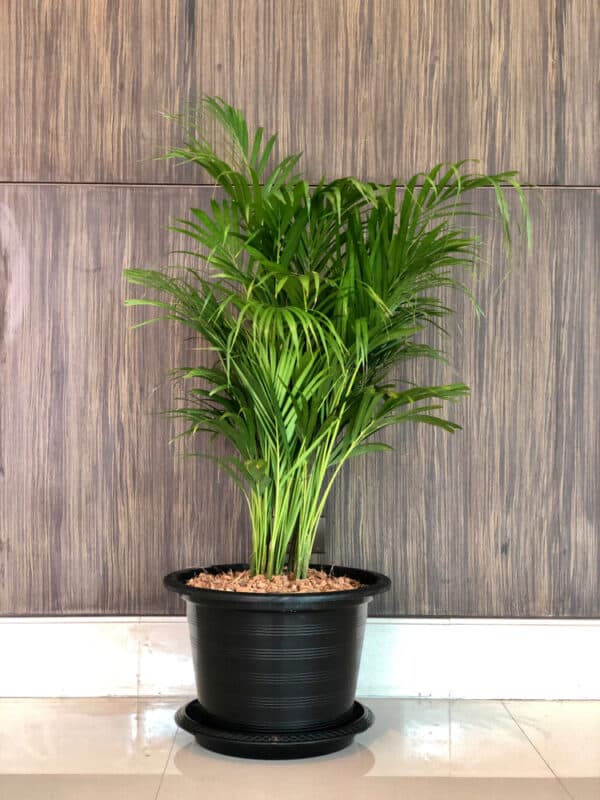
Lady palms prefer humidity of higher than 50 percent. If you find the tips of the leaves turning brown, it may be the humidity is too low.
Outside
Some lady palms can grow up to 20 feet or taller outside. It’s a perfect plant for privacy due to its height and controlled spread.
Choose a position wisely. It should be partially shaded, or have dappled sunlight. Unless you live somewhere with cool, temperate weather, direct sun will be too strong.
Feed twice a year, once in the spring and once in the summer, with an all-purpose fertilizer. The soil should stay relatively moist. The top inch should dry out between watering, but no further.
The ground where you plant must be well-draining.
Companion Planting for Lady Palm
Lady palms make lovely companions for lots of other plants. Think of any species that thrives in partial to dappled shade:
- Jasmine
- Cordylines
- Heliconia
- Pentas
- Grasses
Common Problems and Solutions for Growing
Lady palms are pretty darn tough, but that doesn’t mean you’ll never encounter issues. First, let’s start with a few deficiencies that you should watch out for.
- Dull, yellow leaves and slow growing: This is likely to be caused by a deficiency of phosphorus.
- Leaf edges and tips are brown: This could be plant placement. The lady palm should not be in direct sunlight through a window. It may also be a deficiency of potassium.
- Leaves turn dull green: This is usually a deficiency of nitrogen.
Scale
Scale can appear on lady palms, whether they are inside or outside. Read our in-depth article on scale here.
Spider Mites
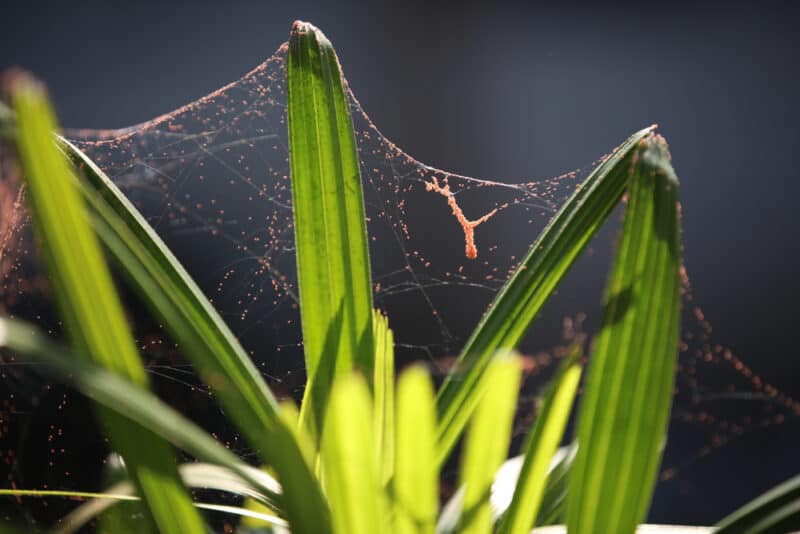
These pests can decimate a lady palm, so you should get rid of them as soon as you see the signs. If they’re one plant, they’re likely on the rest – or they will be soon.
You will see cast skins from the insect, feces, webbing between the leaves, and damaged leaves with yellow stippling.
Use an insecticide or neem oil to eradicate an infestation. Be sure to spray both the tops and bottoms of the leaves.
Vine Weevils
Vine weevils are usually only found on plants outdoors. You’ll see damage to the leaves, usually in the form of little holes.
You should be able to spot the vine weevil themselves. They are usually black with little yellow flecks on the wings. They are about 5/16 of an inch.
Use insecticidal soap to control them.
Tips for Growing Lady Palm:
Inside
- Plant with a good quality potting mix. Use one specifically for palms or African violets.
- Don’t position in direct sunlight.
- Fertilize once a month if needed.
- Allow the soil to dry out about two inches deep before watering again.
- Control humidity and temperature if you can.
- Repot every two years or if the plant is root bound.
Outside
- Provide plenty of shade and dappled sunlight.
- Water well and feed monthly.
- Soil should be well draining and slightly acidic.
- Protect from frost if necessary.

